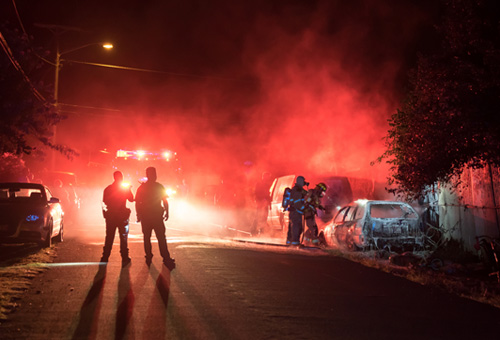


Explore strategies for conducting death investigations that occur from several origins. Learn how to evaluate the crime scene, conduct effective interviews and interrogations, develop case leads, utilize investigative resources (crime laboratories, medical examiners), and comprehend medical autopsies.

Learn how to objectively investigate child death cases, particularly when the cause and manner of death is unexplained. Examine investigative mindset from initial call-out to case resolution and learn how to gain an understanding of what happens with a victim-centered approach, exploring the emotional trauma of the non-offending caregiver. Discuss possible causes of death and best practices and tips including various investigative steps for evidence collection, witness and suspect interviews. This basic course offers law enforcement, CPS, and other child death investigators up-to-date practices for the investigation of child deaths.

Join other investigators to gather new information and tools for investigating fire and explosion related deaths. Examine the principles of fire behaviors, areas of focus in fire related deaths, working with the medical examiner’s office and evidence/scene safety considerations.

Most child deaths appear accidental or from natural causes, but some are later determined to involve foul play. This webinar will discuss procedures from the initial response to a reported unconscious child or child death, and show methods and procedures to prevent loss of evidence or other investigative missteps. Discussion will also include the use of a multidisciplinary team to strengthen your case.

Explore strategies for conducting comprehensive sexual assault investigations. Learn how to support victims, gather and maintain evidence, manage crime scenes, conduct effective interviews and interrogations, utilize investigative resources (SANE nurses and support services), and prepare cases for prosecution.

Examine suspicious death case studies based on the experiences of a homicide detective and forensic pathologist. Identify key scene findings, review actual cases and correlate these findings to the autopsy results. This course will discuss improving case outcomes through strong relationships between investigating agencies and the medical examiner’s office. Students will gain appreciation of how unique case features can affect the direction of the investigation. The ultimate resolution of each case examined will be considered and applied lessons learned are shared during the course.

Suspicious deaths can take months or even years to solve. Collaboration is key to a positive outcome for victims and their families. Bill Hanson shares three critical ways to ensure success in your death investigation cases.

Do you investigate unexplained infant deaths? Do you know how to identify a safe sleep environment? Dr. Katherine Maloney shares three critical things you can use when investigating sudden unexplained infant deaths.

Join other probation, reentry and other corrections professionals to build foundational skills through this comprehensive and interactive virtual training academy. Community-based corrections is the most significant criminal justice response to crime. According to the Bureau of Justice Statistics site, over 70% of all offenders are placed on community-based corrections and over 95% of all offenders will be released back into the community. Over the course of 20 weeks, you will examine traditional, evidence-based, victim-centered and trauma-informed approaches to community supervision and reentry. Course work is designed to support application techniques and case management concepts in the development of core supervisory skills to improve overall outcomes for victims/survivors, communities and offenders.

Pediatric aquatic abuse has a high risk of being missed as it can lack visible injuries, can silence the victim literally and figuratively, and being a form of asphyxiation, can later present as respiratory illnesses or other injuries. Aquatic homicides are at risk of both cause and manner of death misdiagnosis, partially because drowning is a circumstance-dependent, diagnosis of exclusion that can facilitate active staging by offenders.
